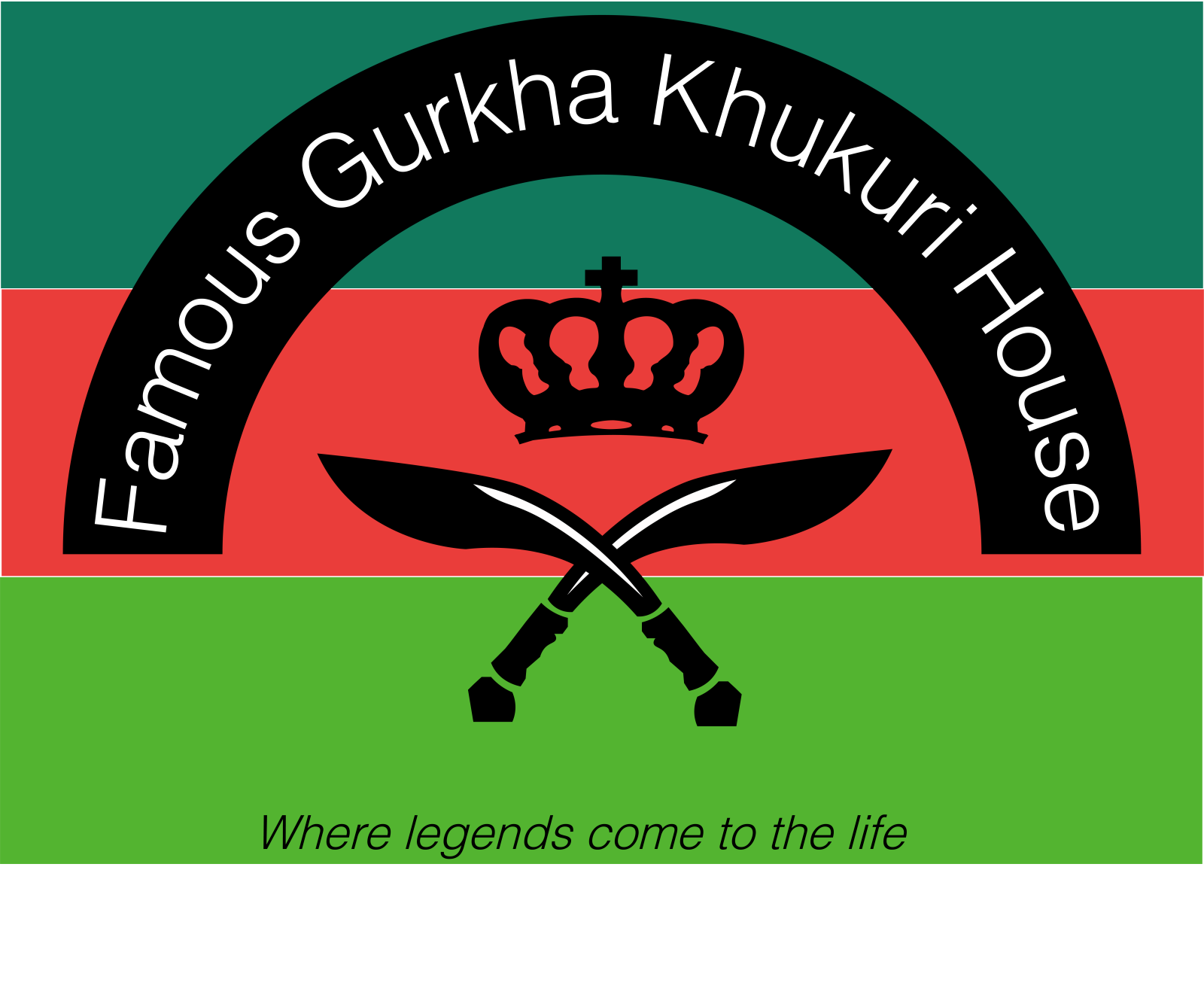Gurkha Khukuri Nepal – The Legendary Gurkha Blade
Nepal “The Land of the Gurkha” is inseparable from its iconic equipment, the Gurkha Khukuri also spelled kukri or khukri ,often referred to as the Gurkha blade or knife. This curved knife is far more than a tool, it is a symbol of valor, tradition, and spiritual belief deeply embedded in Nepali culture. It also symbolizes bravery, national pride, and heritage. Nepali Gurkhas have shown the world the power of the small curved blade called kukri. The kukri has been considered more powerful than a bullet. People feel safe when they have a kukri at home rather than a bullet. The exact origins of the khukuri are not known, but it might have been used in the early stages of human evolution for hunting, and as human civilization developed, the use and practice of the kukri became more common. As humanity progressed, the kukri became a equipment, and the Gurkhas shed their blood to prove its power. The Gurkhas demonstrated that the kukri has the power to rule the world. The kukri is loved by people all around the world. English speakers refer to the kukri as a 'Gurkha Blade' or 'Gurkha Knife'. 
History & Origins of the Khukuri
Representing over 2,500 years of evolution from ancient hunting tools to the deadly equipment wielded by Gurkha warriors it’s believed the modern Khukuri design may link back to the Greek kopis, brought to South Asia around 4th century BC.
The Gurkhas first gained global recognition during the Anglo Nepali War (1814–1816). Over time, the Khukuri became the formal issue knife for Gurkha soldiers, continuing through World Wars I & II earning indelible respect worldwide.
Design & Construction Features
-
Blade Shape & Size:
A forward-curved blade (26 – 38 cm / 10–15 inch), weighing 450–900 gram, balances chopping power and control. -
Cutting Notch (Cho / Karda / Kauda):
The distinctive notch at blade base prevents blood or sap from reaching the handle, aids sharpening, and carries spiritual symbolism often tied to Hindu concepts or cow’s hoof symbolism. -
Handle:
Crafted from water buffalo horn, hardwood, rosewood, bone, or metal. Handles are traditionally partial tang, modern versions may feature full tang for extra durability. -
Sheath & Accessories:
Included accessories: a karda, small utility knife and chakmak, blunt sharpening tool / fire striker. Scabbards are typically wooden, sometimes wrapped in leather, and decorated. -
Blade Materials:
Forged by skilled blacksmiths, often using recycled truck or railroad springs for high-quality spring steel.

Types of Khukuri
Each type serves specific needs:- Sirupate: Slender, lightweight for precision work
- Bhojpure: Broad, heavy blade ideal for clearing and chopping
- Angkhola: Lightweight with spine groove (fuller) for balanced use
- Panawal: Full tang construction favored for combat and display
Also, military models like MK1 and MK2, made to regiment standards for durability and balance.
 Cultural Significance & Ritual Use
Cultural Significance & Ritual Use
1. Nepal’s National equipment & Everyday Companion:
The Khukuri isn't just a blade it's the national equipment of Nepal, a core element of the country’s identity. You’ll often see it worn by grooms on their wedding day, symbolizing honor and heritage, and always carried by Gurkha soldiers as a mark of courage and unity. Even rural households keep it handy for daily work cutting wood, preparing food, and skinning games making it as essential as a machete in many homes.
2. Dashain Festival & Spiritual Protection:
During Dashain, Nepal’s most important festival, the Khukuri is ritually blessed and used in ceremonial animal sacrifices a symbol of warding off evil and celebrating the triumph of strength and faith. Families often place the Khukuri under their pillows at night, believing it brings good fortune and protects against negative energy.
3. Heirloom of Lineage, Strength & Status:
Khukuri embody legacy. These blades are handed down generations, marking rites of passage from boyhood to manhood and serving as heirlooms symbolizing family honor, strength, and social status. They are frequently presented at weddings to represent protection, prosperity, and lineage continuity.
4. The Cho Notch: Sacred Symbolism:
The Khukuri’s signature cho notch just below the handle is more than utilitarian; it holds deep spiritual meaning. Its shape signifies the Hindu Om or cow’s hoof, promoting fertility and signaling that the blade shouldn’t be used to harm sacred cows or innocents like women and children. Functionally, it traps blood or fluids to prevent the handle from becoming slippery during use.
Why Choose Our Authentic Handcrafted Gurkha Khukuri
When you choose our Gurkha Khukuri, you're not just buying a blade you're embracing centuries of tradition, cultural heritage, and battle-tested craftsmanship. Each knife is a tribute to the Gurkha legacy, meticulously crafted to be both functional and symbolic. Here's what sets us apart:
- Mastery of Traditional Craft: Our Gurkha Khukuri are handmade by master Kami blacksmiths, inheritors of an age old legacy. Using recycled spring steel from trucks and railways, each blade is heat-treated, hammered, and shaped to perfection representing true resilience and Nepali pride.
-
Field Ready Design for Every Use:
Every Khukuri comes with a karda (small utility blade) and chakmak (sharpening/fire striking tool), packed in a durable leather-bound sheath. Choose between full or partial tang construction for balance and safety ideal for trekking, camping, home use, or ceremonial display. -
More Than a Tool A Cultural Artifact
This isn’t just a blade it's a living piece of Nepal’s soul. Owning one means carrying the valor of Gurkhas, the devotion of the Kami caste, and the spiritual symbolism that protects and empowers. A timeless artifact for warriors and collectors alike. -
Versatile & Respectful:
Designed for utility, legacy, and respect our Khukuris are at home in the jungles of survivalists, the temples of monks, and the display cases of collectors. Whether gifted, used, or passed down, these blades honor the cultural and spiritual traditions of Nepal.




















